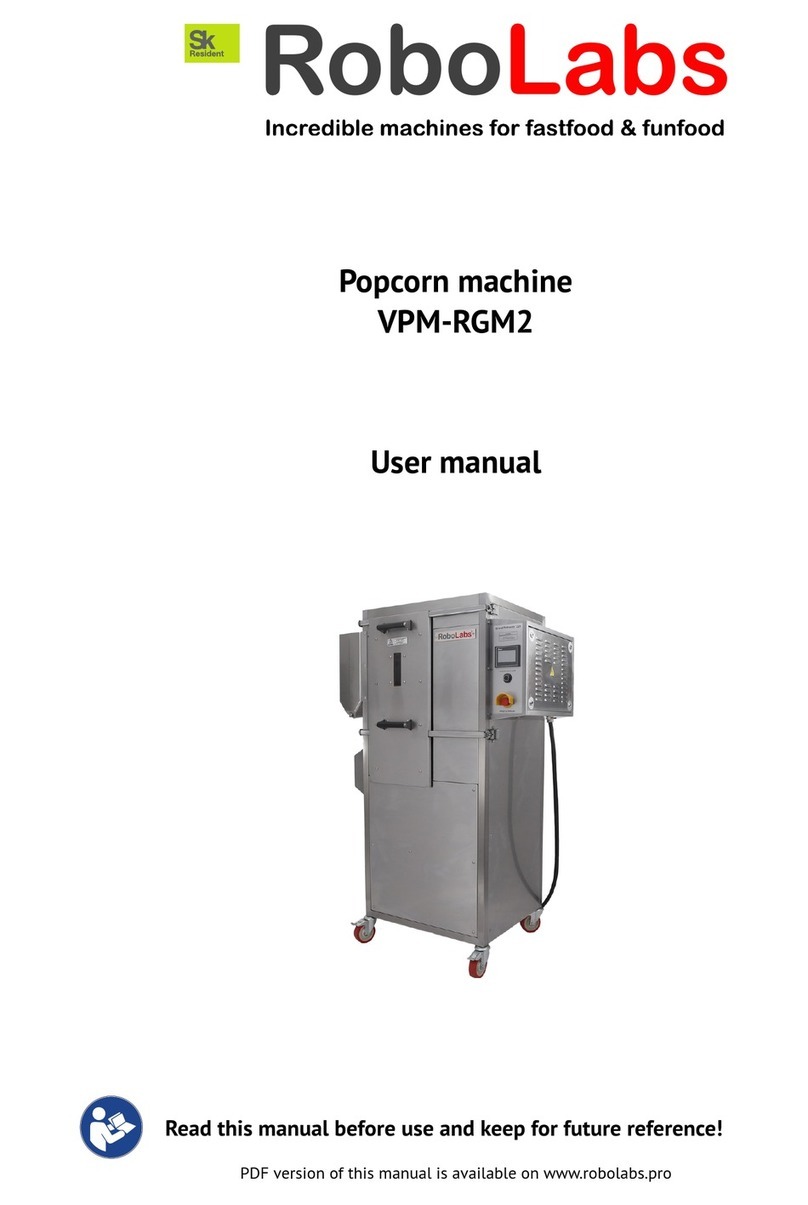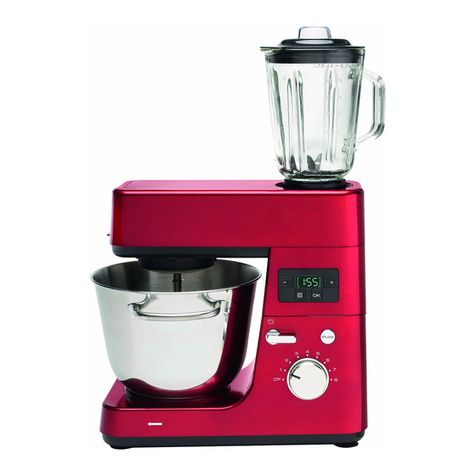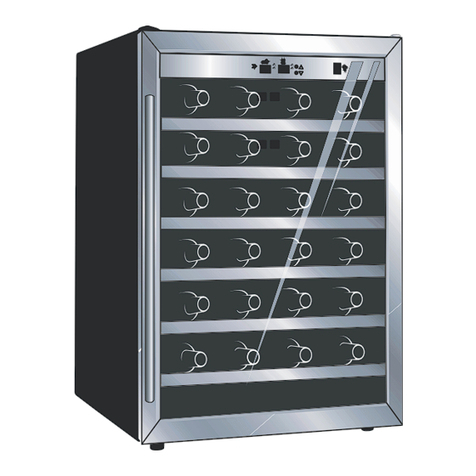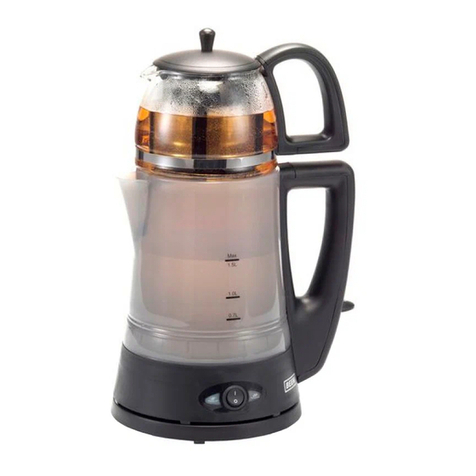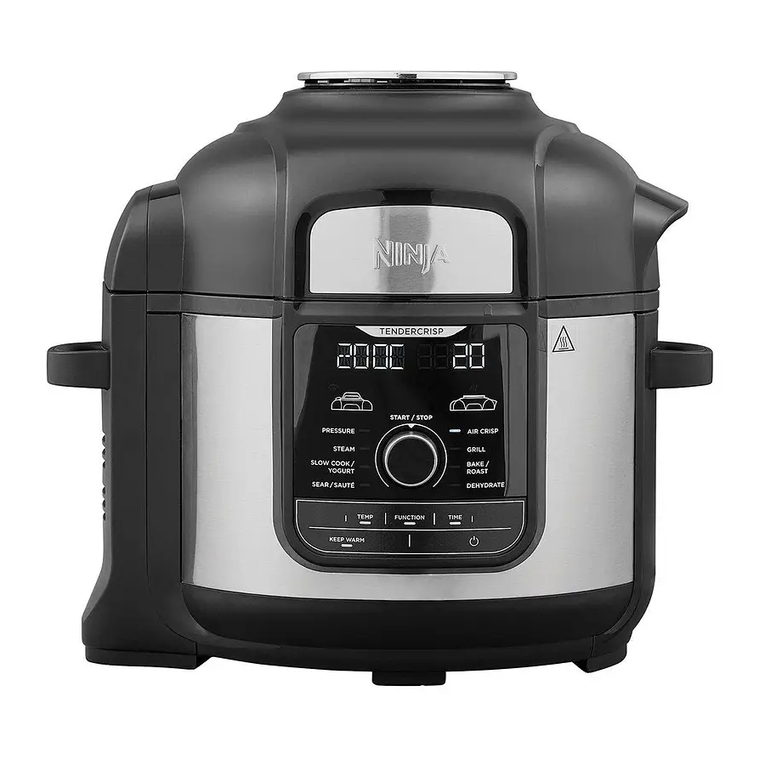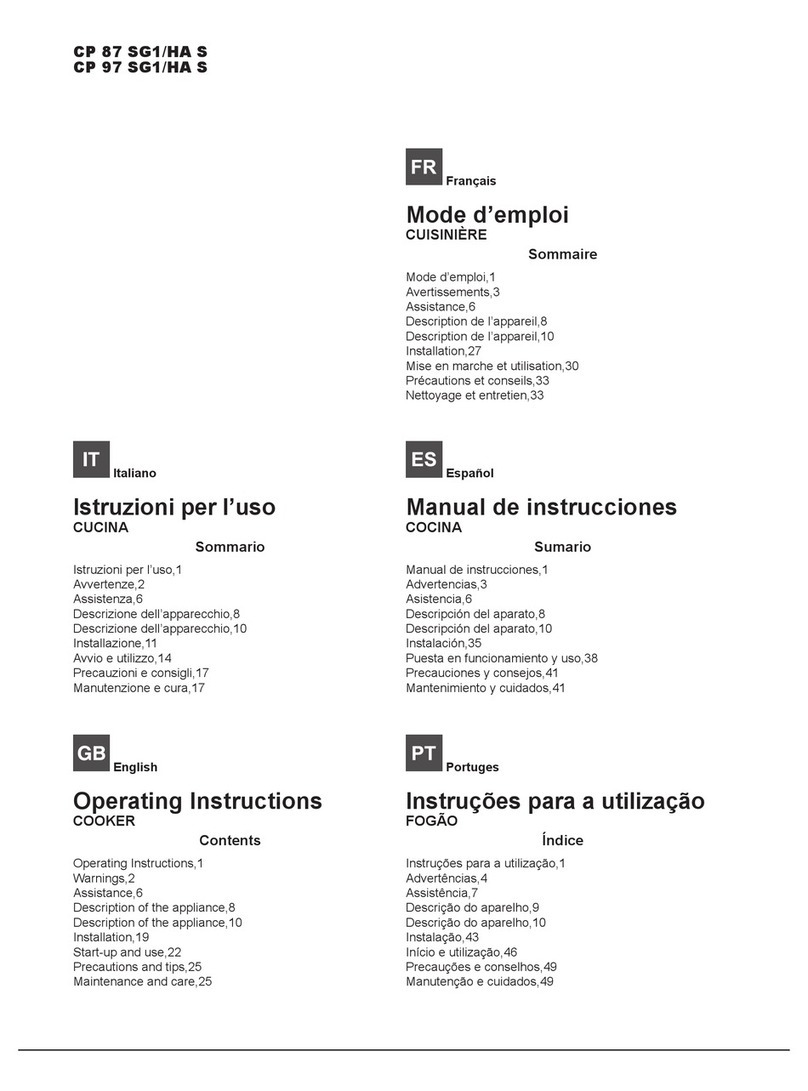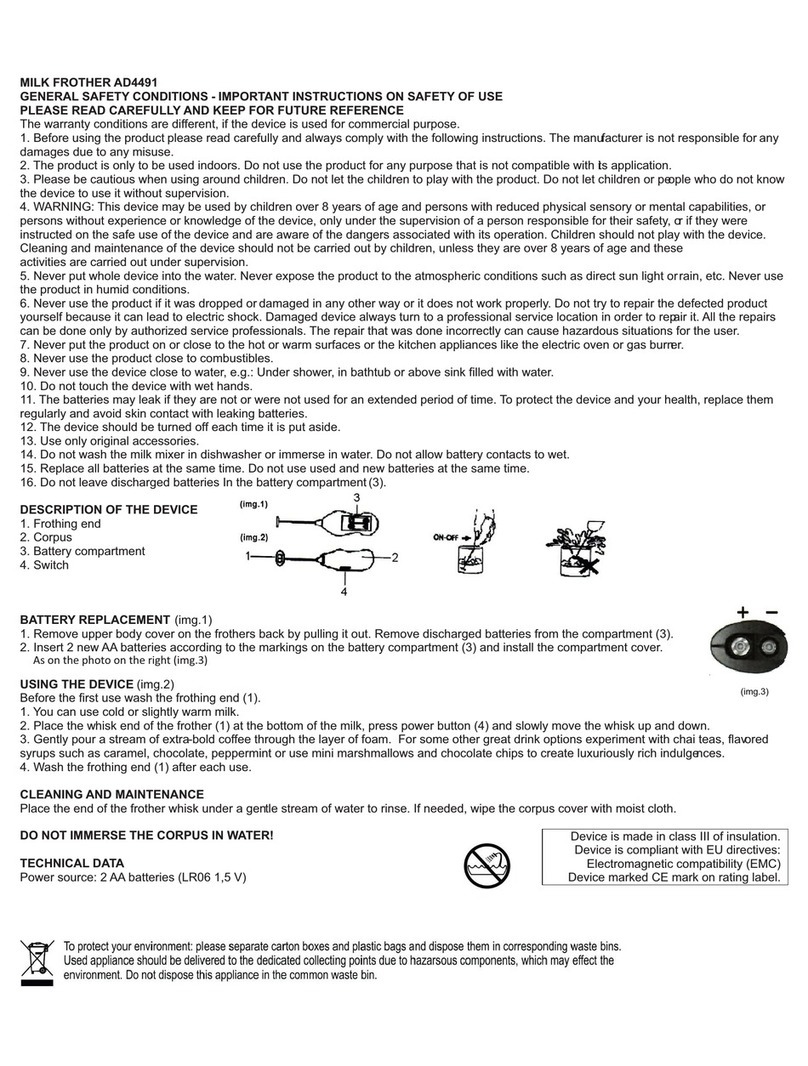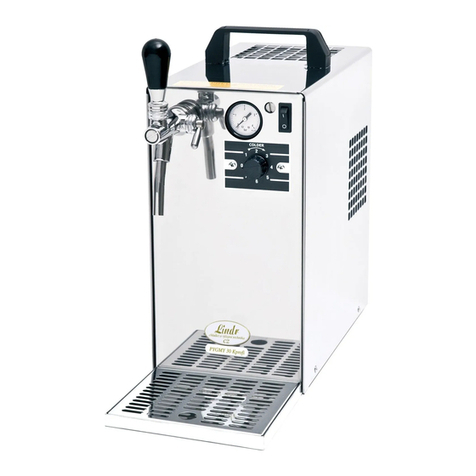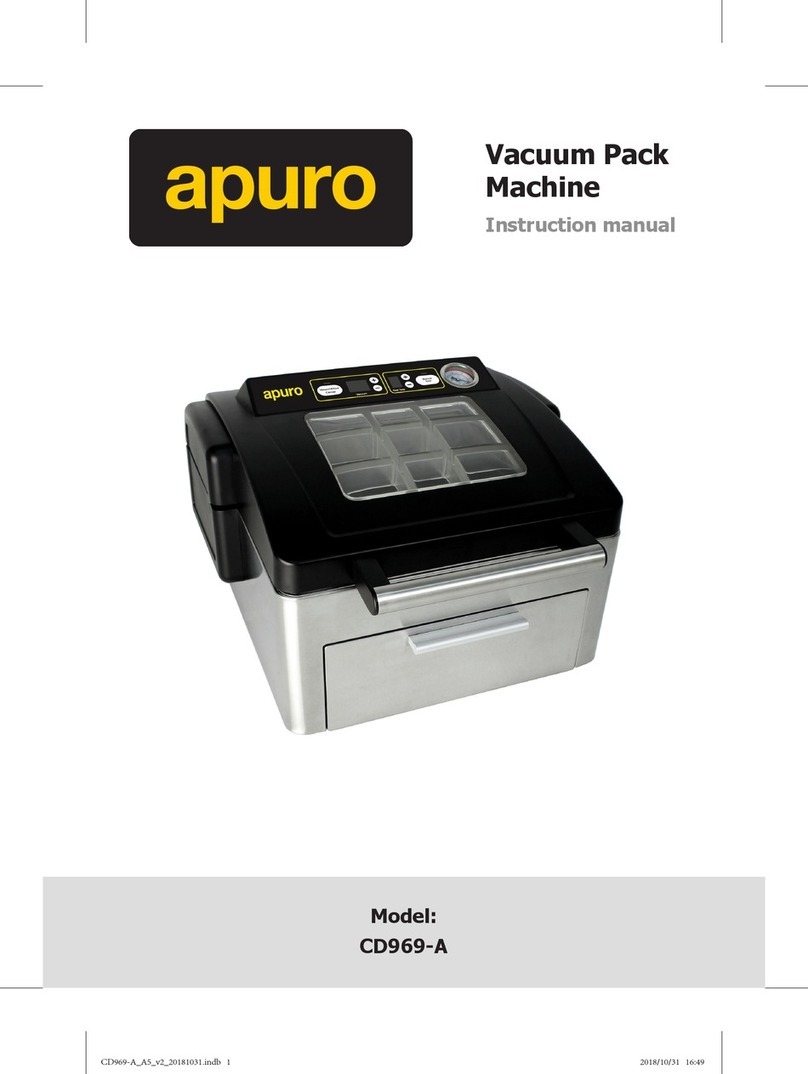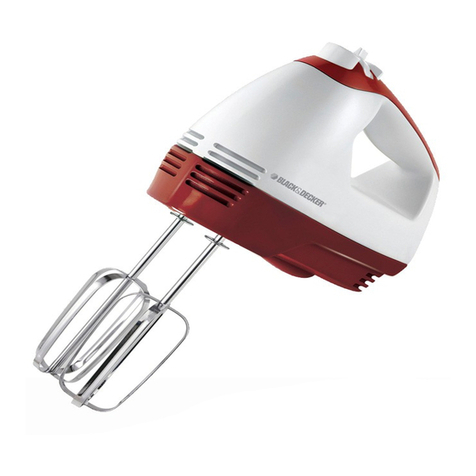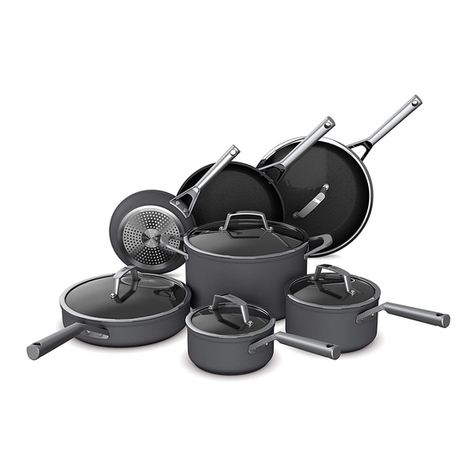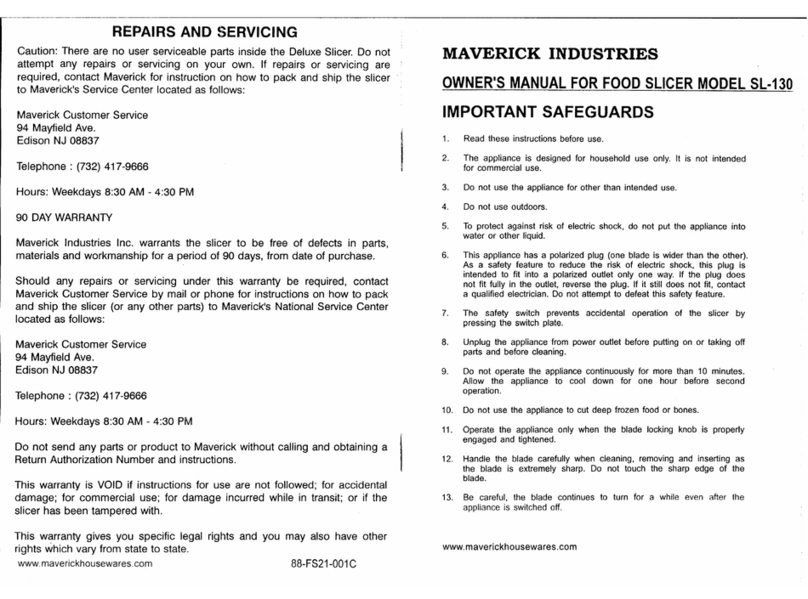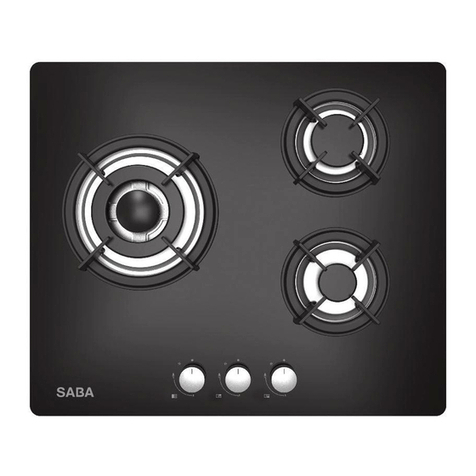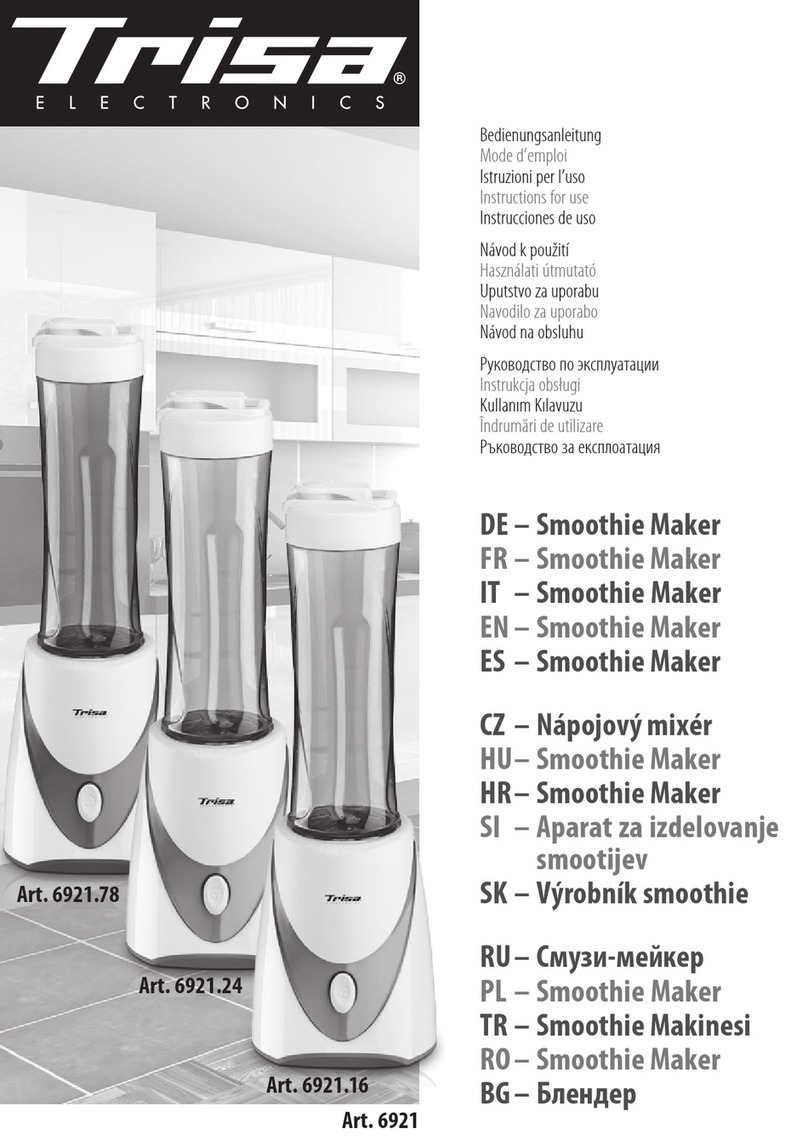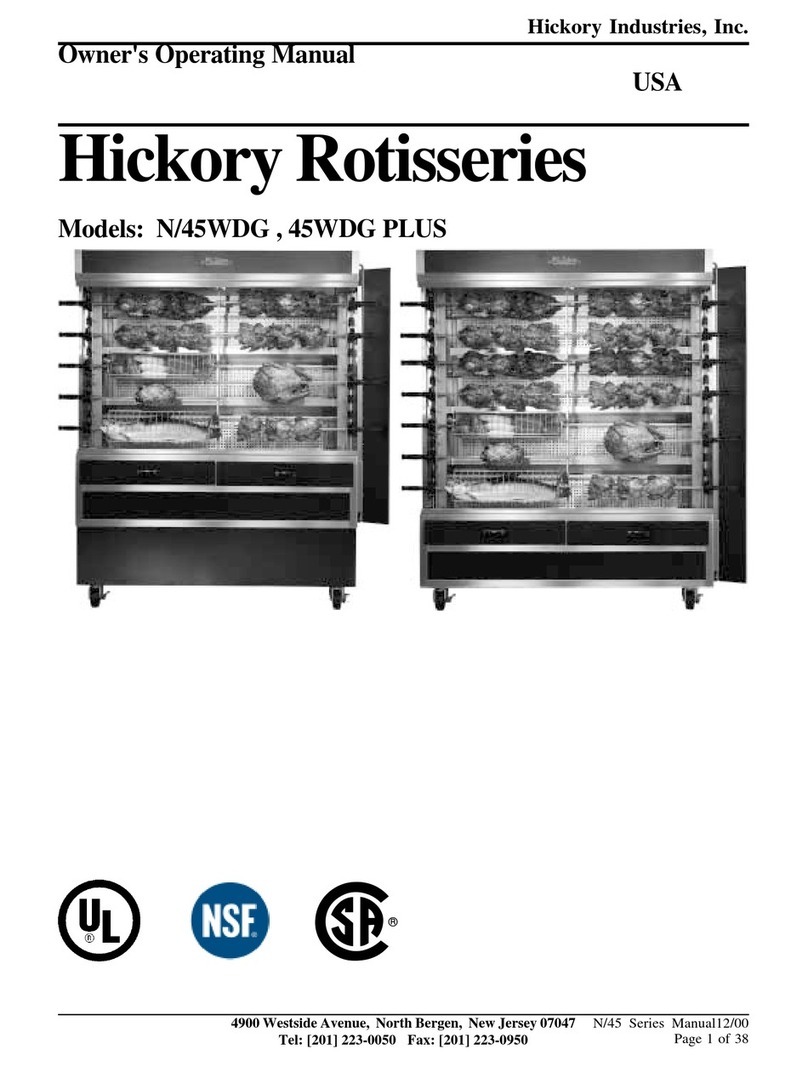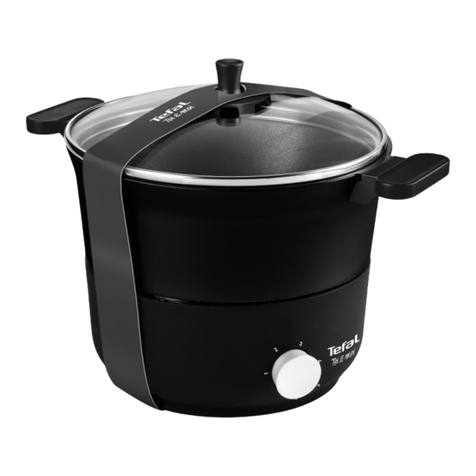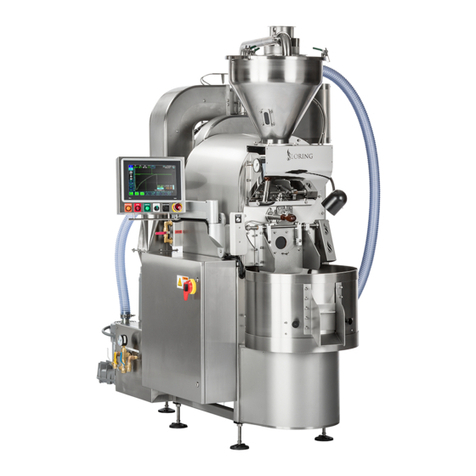RoboLabs Grand Robopop 220 User manual

Popcorn machine
Grand Robopop 220 (VPM-RGM2EU)
400 V 50 Hz
User manual
Read this manual before use and keep for future reference!
PDF version of this manual is available on www.robolabs.pro

Safety requirements
This is the safety alert symbol. It is used to alert you to potential physical injury
hazards. Obey all safety messages that follow this symbol to avoid possible injury
or death.
DANGER
•Not grounded equipment can cause electric shock. Power outlet MUST
HAVE proper grounding to avoid electric shock.
•Using excessive water during cleaning can cause short circuit and elec-
tric shock. DO NOT USE excessive water or water jet for cleaning. DO
NOT SPILL water on electric panels or parts.
•ALWAYS unplug equipment before cleaning or servicing.
•No user serviceable parts inside. DO NOT OPEN electric panel unless you
are qualified for this.
WARNING
•DO NOT process other kernels than corn.
•DO NOT not leave running machine unattended.
•ALL swivel casters must be locked.
WARNING
•Machine’s surface might be HOT during the operation. Touching can
cause burn. DO NOT touch.
WARNING
•Improper installation, adjustment, alteration, service or maintenance can
cause property damage, injury, or death! Read and understand this man-
ual before use.
•Only instructed personnel is allowed to operate the equipment.
1

Contents
1 Overview 3
1.1 Technicalspecifications................................. 3
1.2 Deliveryset........................................ 3
1.3 Assembling and installation . . . . . . . . . . . . . . . . . . . . . . . . . . . . . . . 3
1.4 Powerrequirements................................... 3
1.5 Ambientconditions ................................... 4
1.6 Assembling........................................ 4
2 Design and principle of operation 5
2.1 Principleofoperation .................................. 5
2.2 Workingchamber .................................... 6
2.3 Controlpanel....................................... 7
2.4 Cornbinwithfeeder................................... 8
2.5 Modesofoperation ................................... 9
3 Intended use 10
3.1 Operatingorder ..................................... 10
3.2 Chamber clogged with popcorn . . . . . . . . . . . . . . . . . . . . . . . . . . . . 10
4 Settings 11
4.1 Poppingtemperature .................................. 11
4.2 Feedingtime ....................................... 11
4.3 Turbinespeed ...................................... 12
5 Popcorn quality 13
5.1 Rawcorn ......................................... 13
5.2 Moisturecontent..................................... 13
5.3 Productioncapacity ................................... 13
6 Maintenance and cleaning 14
6.1 Outersurface....................................... 14
6.2 Chamber ......................................... 14
6.3 Cornbinwithfeeder................................... 15
7 Transportation and storage 15
8 Quality control check 15
9 Warranty obligations 16
10 Manufacturer details 16
A Dimensions 17
2

1 Overview
Grand Robopop 220 VPM-RGM2EU is a hot-air popcorn making machine (hereinafter “ma-
chine”). It can process both Butterfly and Mushroom popcorn kernels. The machine is intended
for commercial use only.
1.1 Technical specifications
Throughput up to 100 kg/h
Hopper volume 25 kg
Rated voltage 3N 400 VAC
Rated frequency 50 Hz
Rated power 24 kW
Dimensions (LxWxH) 1220x810x1930 mm
Weight 300 kg
1.2 Delivery set
1x Machine
1x Electric compartment key
1x Cleaning brush
1x Spare halogen lamp
1x User manual
1x Technical manual
1.3 Assembling and installation
1. Unpack the package carefully and check the delivery set.
2. Remove protective film from all surfaces.
3. Wipe all surfaces with a clean soft cloth dampen with dish soap. Remove soap residues.
Wipe dry immediately.
4. Put the machine at even flat floor.
5. Lock all four swivel casters.
6. Connect to the power supply (see Power requirements section below).
1.4 Power requirements
DANGER
•Power outlet MUST have proper grounding to avoid electric shock.
•If supply cord damaged, it must be replaced by manufacturer, service
agent, or skilled person in order to avoid hazard!
•Connections must be done by skilled electrician ONLY!
•
Equipotential bonding wire (up to 10 sq.mm) shall be con-
nected to screw terminal on the base frame marked with IEC
5021 sign:
Use IEC 60309 3P+N+PE 63 A plug for connecting the machine. Short-circuit current rating
for the machine is 6 kA at 400 VAC.
3

1.5 Ambient conditions
The equipment is designed to be operated at the ambient temperature from +5°C to +40°C
(+41°F to +104°F) and relative humidity not more than 45% at 40°C (104°F) while using at
altitudes not exceeding 1000 m over the sea level. The temperature decreasing is related to
RH increasing, for example, 90% of RH at 20°C (68°F).
A ventilation hood measuring at least 1200x1200mm must be provided above the machine,
with a minimum capacity of 2500 cu.m/h. NOTE: Ambient conditions have strong impact on
the end product quality.
1.6 Assembling
1. Unpack the machine carefully.
2. Check the delivery set.
3. Remove protective film from all surfaces.
4. Wipe outer surfaces with a clean soft cloth dampened with a mild soap. Wipe dry imme-
diately.
5. Install on dedicated place. For space requirements see Appendix A.
6. Lock all four swivel casters.
NOTE: Each machine is tested at the factory with corn, some amount of corn kernels might be
found inside the chamber.
4

2 Design and principle of operation
2.1 Principle of operation
The machine and its main parts are represented on Fig.1. Principle of operation is the following.
Turbine (5) creates airflow circulating through the chamber (3), then to heating elements
area (6), and then back to the turbine. The direction of airflow is shown in red arrows.
Corn kernels are supplied from the corn bin with feeder (4) in the chamber.
Once popped, popcorn is being blown out of the chamber through the output port (1).
Operator uses control panel (2) to control the machine operation.
1
3
2
4
2
6
4
5
5
Figure 1: Main components
5

2.2 Working chamber
6
4
3
2
1
7
5
Figure 2: Chamber
Opened chamber is shown on Fig.2.
Perforated bowl (1) has special shaped holes, that
allow to create the air vortex as air flow comes in from
the turbine.
Corn kernels is fed into the chamber from the corn
supply tube outlet (4).
Chamber temperature sensor (2) constantly mea-
sures temperature in the chamber.
Optical sensor (3) controls corn movement inside
the chamber. Machine will not start next batch until
a batch of corn is completely processed, thus avoid-
ing chamber clogging with corn kernels and pop-
corn.
Bae (5) divides the chamber to separate the area
where corn kernels are being heated up, and the out-
put area.
Mesh screen (6) protects internal air ducts from be-
ing clogged with popcorn dust and scrap.
Back light (7) illuminates the chamber, so the op-
erator can visually control the process through the ob-
servation port in the chamber door.
6

2.3 Control panel
WARNING
•Using Emergency stop switch during normal operation might lead to
chamber clogging with popcorn, smoke formation, or machine failure.
USE EMERGENCY STOP SWITCH ONLY in case of emergency!
There are following items on control panel, see Fig.3:
1 – Turn o button; 2 – Pause button; 3 – Start button; 4 – Temperature regulator; 5 –
Clogging indicator; 6 – Low corn indicator; 7 – Feeding switch; 8 – Turbine switch; 9 – Heating
indicator; 10 – Popping indicator; 11 – Cooling indicator; 12 – Emergency stop button.
56
7
8
9
10
11
12
4
3
2
1
Figure 3: Control panel
Temperature regulator
Temperature regulator is used to control temperature
in the chamber.
Light indicators
CLOGGING – chamber is clogged
LOW CORN – corn is low or no corn.
HEATING – machine is in heating mode.
POPPING (glows) – machine is in operation mode.
POPPING (blinks) – machine is in pause mode.
COOLING – machine is in cooling mode.
Switches
FEEDING – weight of a single load.
TURBINE SPD – turbine speed increment.
Push buttons
START – turns machine on.
PAUSE – turns on pause mode and resume popping
mode.
TURN OFF – turns machine in cooling mode.
EMERGENCY STOP – immediately shuts the machine
o.
7

2.4 Corn bin with feeder
WARNING
•Burn hazard! Hot air may comes out from the machine through the corn
supply tube (pos.1 Fig.4). DO NOT touch or reach into the corn supply
tube. KEEP OFF this area.
Corn bin with feeder is shown on Fig.4.
Corn kernels is loaded in the corn bin (5). Inside there is a feeding auger, that is driven by
the motor (2). When the motor (2) operates, corn kernels are being pushed to the corn supply
tube (1) that directs corn kernels into the working chamber.
Protective fixed guard (3) prevents direct access to the exposed part of feeding auger.
Photoelectric sensor (4) trips whenever the bin becomes empty. Once the sensor is tripped,
the machine notifies the operator that the bin must be refilled.
2
4
1
3
5
Figure 4: Corn bin with feeder
8

2.5 Modes of operation
Whenever the machine is turned on, it is in one of the following modes of operation.
Heating mode
Once the machine is turned on, it automatically starts to heat up air in the chamber. Upon
reaching certain temperature the machine automatically switches to popping mode.
Popping mode
This is the main mode of operation. Machine processes corn kernels batch by batch, in cyclic
mode. Each cycle consists of three stages:
1. Feeding – hopper auger rotates, pushing corn kernels into the chamber.
2. Popping – corn kernels are being heated up in the chamber, eventually being blown out
from the chamber once popped.
3. Purging – turbine is accelerated in order to blow out everything left in the chamber: un-
popped kernels, dust and other scrap.
Pause mode
Whenever the operator initiates pause, the machine processes current batch of corn, and then
stop feeding next batches of corn. The temperature in the chamber is maintained at the set
value. Popping process can be resumed at any time.
Cooling mode
The machine needs to be cooled down before turning the turbine o. Whenever the opera-
tor initiates cooling mode, heating elements are de-energized; but the turbine keeps running,
cooling down the machine. Once temperature drops low enough, the turbine stops and the
machine turns o automatically.
9

3 Intended use
3.1 Operating order
1. Ensure the chamber is clean.
2. Ensure the receiving device (e.g. VPM-RGSM3EU sifting drum) is running.
3. Fill corn bin with corn kernels at least for 3/4 of its volume.
4. Press START to turn the machine on. Machine begins to heat up.
5. Once machine reaches set temperature, it starts to make popcorn automatically.
6. If you want to suspend the operation, press PAUSE once. To resume the operation, press
PAUSE one more time.
7. To end the operation and turn the machine o, press COOLING. Heating is turned o,
but turbine continues its operation in order to cool down the machine enough to turn o
safely.
8. Once machine cooled down enough it turns o automatically.
3.2 Chamber clogged with popcorn
CAUTION
•DO NOT PANIC if chamber is clogged.
•DO NOT OPEN chamber.
•DO NOT USE fire extinguisher. The machine is made of stainless steel, as
long as chamber is closed, popcorn won’t get fire.
The optical sensor (pos.3 Fig.2) protects the machine from clogging. The new portion of corn
won’t be pushed in the chamber until the previous batch is processed and left the chamber.
Thus the possibility of clogged chamber is minimal. However, the chamber may be clogged
due to various reasons, for example:
•Power supply issues (voltage drop, power cut-o, etc.).
•Actuating Emergency stop switch.
If chamber is clogged, do the following:
1. Disconnect machine from the mains.
2. Wait until machine cools down (may take few hours).
3. Open the chamber and clean inside.
4. If corn supply tube is clogged with corn kernels and popped popcorn, use a cleaning
brush from the delivery set.
10

4 Settings
4.1 Popping temperature
Temperature regulator has Process value (PV) display (1), Set value (SV) display (2), and ad-
justing keys (3), see Fig.5:
1
2
3 4
Figure 5: Temperature regulator panel
Popping temperature aects shape and size of popcorn. Too high temperature leads to
smaller popcorn and possible chamber clogging. Too low temperature leads to reduced pro-
ductivity, improperly popped kernels, and clogged chamber. Choose the exact value that pro-
vides the best result for particular corn. Normally, Butterfly corn requires 200-215°C (392-
419°F); Mushroom 210-225°C (410-437°F). Too high temperature causes shrink volume of
popcorn. Too low temperature causes reduced output.
Process value display (1) reads the current temperature in the chamber, Set value display
(2) reads the value defined by user. Press to decrease the set value. Press to increase
the set value.
NOTE: During normal operation PV may fluctuate, this is normal.
4.2 Feeding time
Feeding time is the duration auger operates pushing corn kernels to chamber. FEEDING switch
allows to set 35 seconds (1), 40 seconds (2), and 45 seconds (3). Longer time of auger oper-
ation means more corn processed per cycle.
Machine uses chamber optical sensor (pos.3 Fig.2) to control the process. It won’t start
the new batch of corn until the previous batch has not processed yet. For this reason, Feeding
time does not directly aect the overall production of the machine.
Choose the feeding time depending on performance of a certain corn. For example, if corn
has too much moisture, bigger load of corn per batch might cause deeper temperature drop,
unstable operation of the machine, and eventually, poor quality end product. For more stable
operation while using low quality corn, it is recommended to keep Feeding time at minimum.
11

4.3 Turbine speed
Turbine speed for Mushroom should be higher than for Butterfly. Unlike Mushroom, which
has proper spherical shape, Butterfly has irregular shape with “winglets”; hence less intense
airflow is required to blow out Butterfly popcorn; and more intensive airflow is required for
Mushroom.
Alike the popping temperature, excessive values of turbine speed may cause a bunch of
issues. Too slow turbine will cause popcorn accumulation in the chamber, smoldering, smoke
formation, and finally, chamber clogging. Too fast turbine increases scrap rate, because many
kernels are blown out of the chamber before they pop. Airflow intensity can be reduced be-
cause of clogged metallic mesh inside the chamber. See Maintenance and cleaning section.
The Vortex patented technology is based on air convection inside the machine. Airflow is
created by the turbine (blower) that is being controlled by the machine’s algorithm. During
popping stage the algorithm gradually increases the turbine speed, starting from the basic
speed (F) set on the inverter (VFD). How much the speed will be increased over the whole
popping cycle is directly depended on TURBINE SPD position. Positions 1, 2, 3 corresponds to
increments of 6 Hz, 8 Hz, and 10 Hz, respectively.
Watch the chamber through the observation port after feeding cycle is completed. If corn
kernels do not move around the perforated bowl for more than 60 seconds, increase the basic
speed F.
Too high basic speed (F) and/or too high value of speed increment (set by TURBINE SPD)
might cause higher scrap rate. Too low values might lead to chamber clogging. Choose both
values based on performance of particular corn so that to minimize the scrap rate, from one
side, and to avoid chamber clogging, from the other side.
Basic speed (F) adjustment procedure
DANGER
•Electric shock hazard! High voltage inside electric panel. DO NOT touch
bare terminals and/or wires.
•Only skilled person is permitted to perform the following operation.
Figure 6: VFD control panel
To change the basic speed (F) do the following:
1. Open the electric panel of the machine.
2. Locate the VFD unit with control panel, see Fig.6.
3. Ensure the display reading starts with F. If not,
press one or more times, until F reading ap-
pears on the display.
4. Press or keys to increase or decrease
the basic speed.
5. Close the electric compartment.
12

5 Popcorn quality
Popcorn is a product that requires ultimate attention towards many aspects. Understanding
popcorn processing technology is essential to get high quality product.
5.1 Raw corn
It is impossible to get good stable result using low quality supplies, first of all, raw corn kernels.
Choose reliable corn suppliers. Make sure that raw corn is stored and handled properly at your
production site or warehouse. Ask your supplier for corn storage recommendations.
5.2 Moisture content
Popcorn is crunchy when its moisture content doesn’t exceed 1-1,5%. Popcorn that just came
out of the machine usually has higher moisture rate (4-5%), it is still losing moisture as cooling
down. At this moment it may appear soggy and chewy. You must arrange the workflow in such
a way that popcorn has enough time to cool down before the next stage of processing, coating,
for example.
5.3 Production capacity
Due to the nature of popping process, the weight of raw corn processed is not the same as the
weight of ready-to-eat product at the machine’s output. The dierence might be up to 20%.
Low quality corn or improperly chosen parameters may increase the dierence.
If corn used is too dry, or there is a lot of damaged kernels, then there will be a lot of un-
popped kernels screened in sifter and found in the scrap tray.
If turbine speed is set too high, a lot of kernels will be blown out before they would have
been popped.
Scrap amount might be up to 5-7% (by weight, compared to the weight of raw corn pro-
cessed). If scrap rate exceeds this value, then the reason might be low quality corn or too high
turbine speed.
13

6 Maintenance and cleaning
DANGER
•ALWAYS UNPLUG equipment before cleaning or servicing.
•DO NOT USE excessive water or water jet for cleaning. DO NOT SPILL
water on electric panels or electric parts.
•Keep power cord and plug o the floor and water.
WARNING
•Burn hazard! WAIT until cooled down before cleaning.
CAUTION
•DO NOT USE aggressive solutions, or sharp items, or abrasives for clean-
ing.
The purpose of maintenance and cleaning is to keep machine in good condition during all the
lifetime and to meet safety requirements. If machine is not used for long time, do all the clean-
ing procedures.
Recommended cleaning schedule:
Outer surface cleaning every day
Chamber cleaning, including mesh screen every day
Feeder cleaning every month
6.1 Outer surface
1. Unplug the machine.
2. Clean outer surfaces of the machine with a clean soft cloth or sponge dampened with
cleaning solution.
3. Wipe dry immediately.
6.2 Chamber
1. Open the chamber.
2. Remove unpopped kernels from the perforated bowl, (pos.1 Fig.2).
3. Remove dust from internal surfaces of the chamber with the means of soft dry clean cloth.
Avoid hard impact to the optical sensor, (pos.3 Fig.2).
4. Clean the mesh screen (pos.6 Fig.2) with a suitable brush or a vacuum cleaner.
5. If the mesh screen is heavily clogged with dust and scrap, then do the following:
(a) Remove the screws that hold the bae (pos.5 Fig.2).
(b) Take the bae out from the chamber.
(c) Clean the mesh screen.
(d) Put bae back on its place and secure the fasteners.
14

6.3 Corn bin with feeder
1. Empty the corn bin.
2. Wipe internal surfaces of the bin with a soft clean damp cloth.
3. Wipe dry immediately.
Use a soft dry clean cloth to clean the feeder inner surfaces. It is allowed to use a vacuum
cleaner to remove dust from inside the feeder.
7 Transportation and storage
The equipment may be transported by any kind of covered vehicle, in accordance with trans-
portation rules for this kind of vehicle. Ambient temperature during the transportation and
storage must be between minus 25°C and +55°C.
8 Quality control check
Grand Robopop 220, VPM-RGM2EU
Product name, model Serial no.
The equipment is made with accordance to mandatory requirements of the state
standards, actual technical documentation, and approved for use.
QC Engineer
STAMP HERE
Signature Full name
DD.MM.YYYY
15

9 Warranty obligations
The manufacturer guarantees trouble-free operation of the equipment during 12 months from
the date of receiving the equipment by a dealer (in accordance with transport documentation);
or, in case of purchase directly through Trapeza LLC or RoboLabs Ltd., from the date of pur-
chase, given that terms of using, transportation, and storage are met.
The warranty repair is performed upon presentation of this manual and filled warranty card
with the seller’s seal and the date of sale. Technical specifications of the equipment can be
changed by manufacturer at any time due to improvements and/or other reasons. Technical
specifications stated in this document are intended to act as a reference point, which is neces-
sary to evaluate suitability of the equipment for the customer’s needs, and are not the subject
of warranty policy.
The information stated in this document has been thoroughly checked and considered as ac-
curate one; nevertheless, the manufacturer is not responsible for any typographical errors or
misprints.
Due to constant improvement of the equipment, technical specifications are subject to change
without prior notice!
10 Manufacturer details
RoboLabs Ltd.
11 Industrialnaya Street, Tver, 170100 Russia
Technical support:
Email: support@robolabs.pro
Phone: +7 495 956 4000
16

A Dimensions
NOTE: VPM-RGSM3EU sifting drum is not included in the delivery set and shall be ordered sep-
arately.
All dimensions are in mm:
1220
810
2310
1934
765
1520
17
This manual suits for next models
1
Table of contents
Other RoboLabs Kitchen Appliance manuals
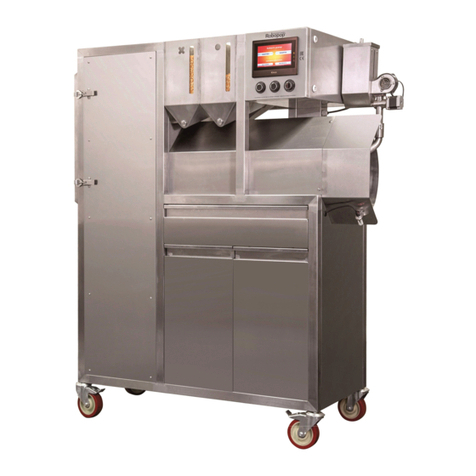
RoboLabs
RoboLabs Vortex Popcorn Robopop 60 Operating manual
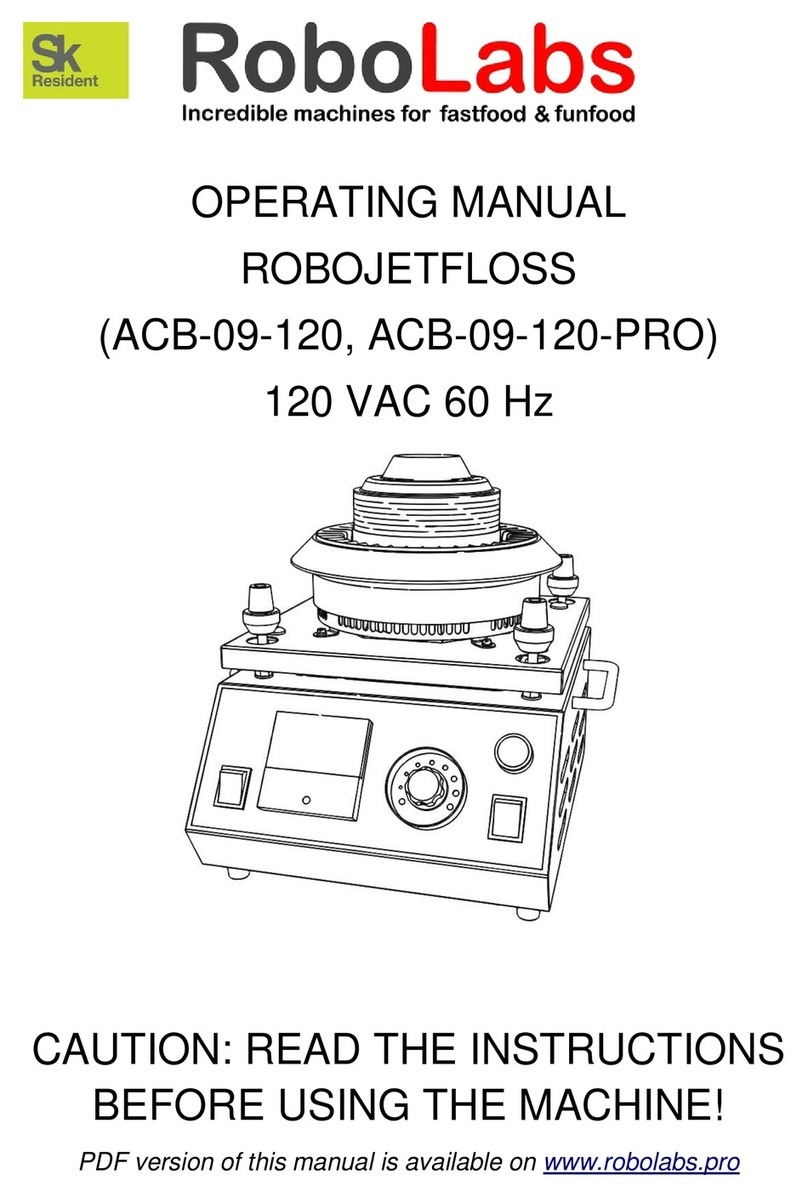
RoboLabs
RoboLabs ROBOJETFLOSS User manual

RoboLabs
RoboLabs ROBOMIX MINI User manual

RoboLabs
RoboLabs ROBOJETFLOSS User manual
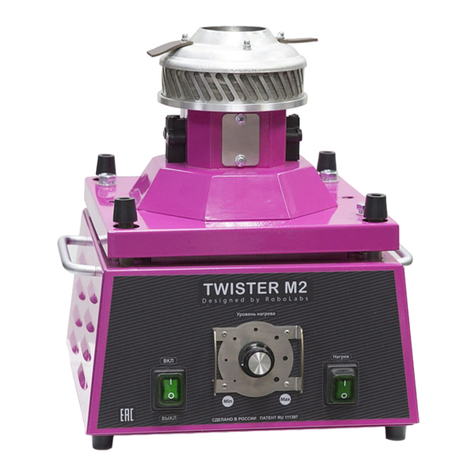
RoboLabs
RoboLabs TWISTER-M2 User manual

RoboLabs
RoboLabs ROBOJETFLOSS ACB-09-120 User manual
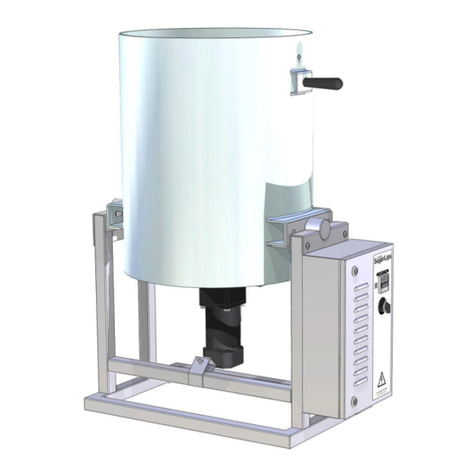
RoboLabs
RoboLabs SUGARLIPS 20 User manual

RoboLabs
RoboLabs ROBOPOP 60 User manual
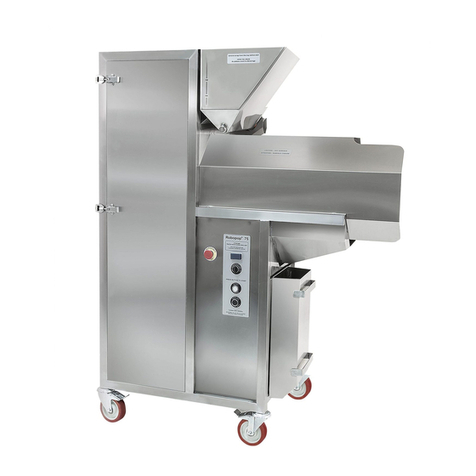
RoboLabs
RoboLabs Robopop 75 User manual
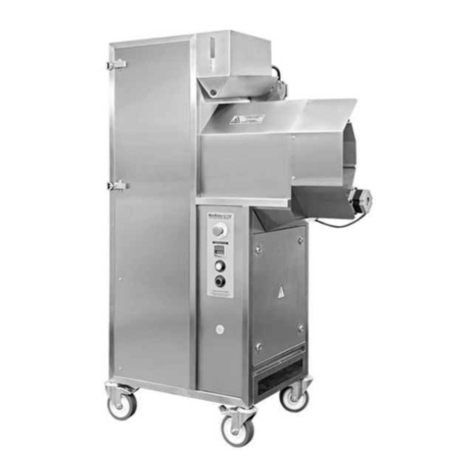
RoboLabs
RoboLabs MINI ROBOPOP 25 User manual
